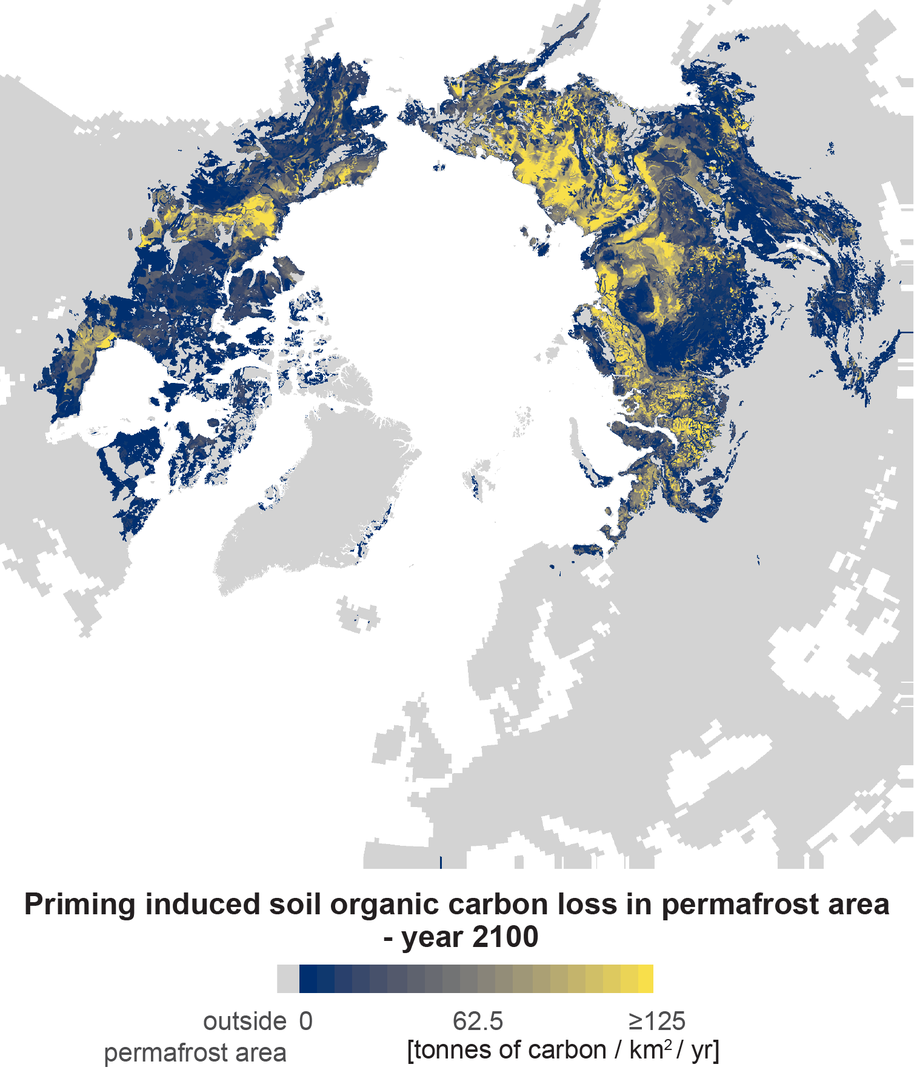Greenhouse gas emissions from permafrost area larger than earlier estimated

Permafrost is permanently frozen ground which is a huge store of the Earth’s carbon. It stores as much carbon as all the plants on Earth and the atmosphere combined. The surface of the permafrost thaws in summer, allowing plant and soil life to thrive. When microorganisms breathe, they emit greenhouse gases. Scientists have previously anticipated that rapidly rising temperatures will drive the emission of 50-100 billion tonnes permafrost carbon by 2100. On top of that, plant roots feed sugar to the microorganisms in the soil, which the microbes can use to break down more soil organic matter – the priming effect – resulting in even higher greenhouse gas emissions.
“We have known about the priming effect since the 1950’s, but we did not know whether or not this small-scale ecological interaction had a significant impact on the global carbon cycle”, says Research Scientist Frida Keuper from INRAE and Umeå University. She co-led the international research team with Assistant Professor Birgit Wild from Stockholm University.

The team of researchers combined maps of plant activity and detail data on soil carbon content with an extensive literature survey on priming and plant root properties. Associate professor Matti Kummu together with Dr Mika Jalava from Aalto University were responsible in developing a spatially explicit model which combined all this information. The model was used to estimate the priming effect in permafrost ecosystems and its influence on greenhouse gas emissions over the entire arctic permafrost areas, covering circa 14 million squarekilometre.
“With the model we were able to, for the first time, estimate the priming effect on a large scale and identifying the priming hotspots. Further, the modelled results and identified uncertainties help other scientist in their ongoing research” says Kummu.
"These new findings demonstrate how important it is to consider small-scale ecological interactions, such as the priming effect, in global greenhouse gas emission modelling", Birgit Wild continues.
Publication:
Frida Keuper, Birgit Wild, Matti Kummu, Christian Beer, Gesche Blume-Werry, Sébastien Fontaine, Konstantin Gavazov, Norman Gentsch, Georg Guggenberger, Gustaf Hugelius, Mika Jalava, Charles Koven, Eveline J. Krab, Peter Kuhry, Sylvain Monteux, Andreas Richter, Tanvir Shahzad, James T. Weedon, Ellen Dorrepaal (2020) Carbon loss from northern circumpolar permafrost soils amplified by rhizosphere priming, Nature Geoscience, issue and DOI-number

Read more news

Success of BATCircle2.0 bolsters Finnish leadership in Li-ion battery supply chain
The Aalto-led collaboration between researchers and industry resulted in impressive research outputs
Maintenance break in ACRIS on 30th of September, 2024
Maintenance break in ACRIS on September from 10:00 to 16:00.
Aalto students' public art projects featured at award-winning ANTI-Festival
Last week in Kuopio, a fascinating collection of public art projects was presented by students from Aalto University's Department of Art and Media.